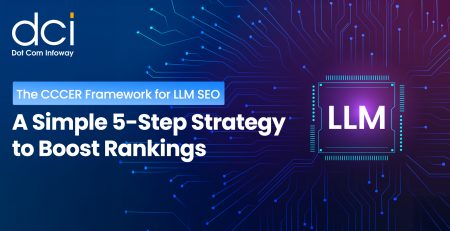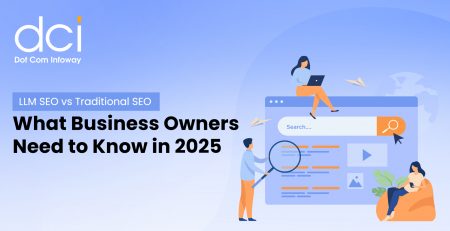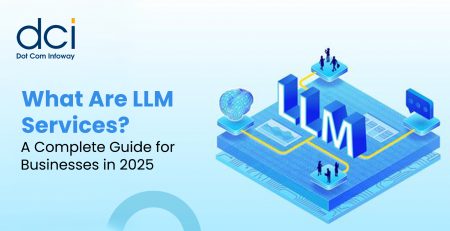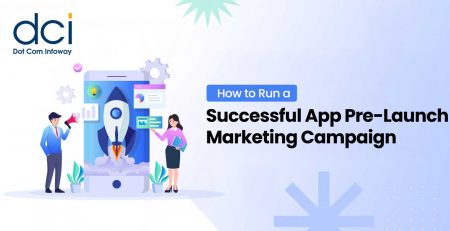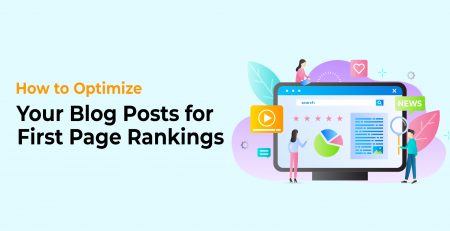What is Email Marketing? A Guide to Successful Email Marketing Campaigns
Email marketing means sending commercial and promotional messages by email, to a carefully selected group of prospects, for the purpose of getting leads or making sales.
Sustained email marketing doesn’t just entail promoting products and services, but it’s also about developing long-term relationships with potential customers and clients so that they begin to trust you and when the right time comes, prefer to do business with you rather than somewhere else.
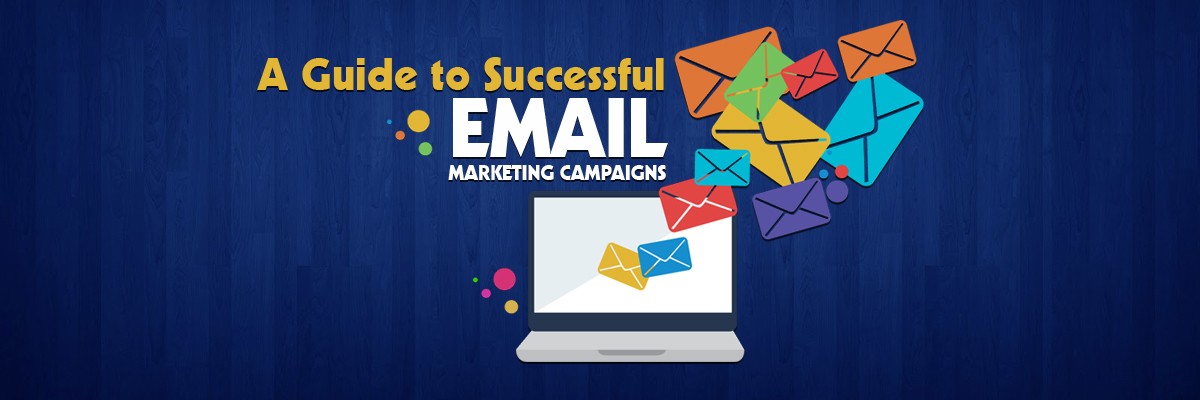
Importance of Email Marketing
Despite various means of communicating with people these days, including instant messaging and social media platforms like Facebook and Twitter, email remains the most effective way to universally reach out to people, especially those people who have, in some way or another, shown interest in your product, service or website.
According to the last count,
- There were 2.6 billion email users in the world and 58% email users check their email first thing in the morning compared to 11% Facebook and 2% Twitter.
- The average click-through rate in emails is 3.7% compared to 0.07% in Facebook and 0.03% in Twitter.
Email has been there since the advent of the Internet. It is one of the most fundamental communication tools on the web, unlike various trends that appear and vanish every few years.
Not just the most effective, it is also the most inexpensive way of reaching out to your core audience.
How to Get started with Email Marketing
There are two parts of the first step that you need to take to get started with email marketing:
- Figure out how you’re going to build your mailing list
- Decide what you’re going to communicate to your email subscribers
We will come to both these points a bit later but let’s move backward before even this first step: deciding how you’re going to broadcast and manage your email marketing campaigns.
These days there are some excellent email marketing companies that allow you to build your mailing list from your website, broadcast your messages manually as well as automatically, obtain deep analytical insights into how people are responding to your individual campaigns, and create targeted segments for better results.
Some of the contemporary email marketing services are listed below:
- MailChimp
- AWeber
- Constant Contact
- GetResponse
- Drip
There are many more and which service you go for depends on your preference, budget and the degree of independence you are looking for.
It is not necessary that you need to choose one of these services for your email marketing campaigns; you can let your digital marketing company handle your email marketing through either their own servers or through some service that they think should work for you.
The above-mentioned email marketing services (or any other service that you decide to choose, or your digital marketing company decides to choose) allow you to publish signup forms on your website and gather email subscribers for your mailing list.
Once you have established a mechanism to grow your mailing list, you have to decide what sort of content you’re going to broadcast.
Are you simply going to send out promotional messages to your email recipients, or you’re going to build up a long-term relationship with them by sending them useful information that they can use to make better decisions about your products and services, or, to be able to use your products and services in a better manner.
Different businesses may have different ways of using email marketing. An online retail business such as Amazon.com may simply send out product listings according to the buying pattern of the email recipient. A subscription-based service may help its users to use its products easily and in a better manner so that people go on paying for the service every month or every year.
How to Grow your Email List?
As mentioned above, once you decide to use email marketing, you will need to build your own mailing list. Many businesses opt to purchase an email database, but this often leads to spamming because the people whose email addresses exist in the database never opted to hear from you. So, it is always best to build your own mailing list because that way, people give you their email ids to be able to receive messages from you.
But people won’t just give you their email ids unless it is going to be of some benefit to them. If you are a known brand and you are known for your content quality, people will gladly give their email ids on your website, but if you are relatively an unknown brand, you will have to offer them something irresistible, something like a lead magnet, to encourage them to drop their email id at your website.
What is a Lead Magnet?
A lead magnet is an e-book, a case study or a white paper that someone can download in lieu of giving you his or her email id. It is an incentive that you offer to your prospective subscribers so that to be able to download the contents of the lead magnet, they give you their email id. The lead magnet needs to be irresistible in a manner that people should be compelled to download it and eagerly give something back to you, in this case, their email id, to get it.

What makes a Good Lead Magnet?
A good lead magnet has the following qualities:
- It offers a solution to a pressing problem your visitor is facing.
- It offers something very big that can have a significant impact on your visitor’s life.
- Leads to a specific end-result desired by your visitor.
- It gives immediate gratification.
- Reconfirms an idea or a notion nurtured by your visitor.
A lead magnet doesn’t have to be very big, or very small. If it is very big (300 pages) it is going to intimidate your prospect. If it is very small, your prospect is not going to take it very seriously. So, what should you do? Go with the flow.
A catchy title plays a very important role in creating a good lead magnet. Unless the title of your lead magnet (e-book, white paper, case study, discount coupon, free access to premium content) convinces your prospect, he or she is not going to give you his or her email id for it.
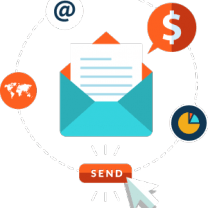
Need help with Email Marketing?
We offer a range of email marketing solutions such as designing highly targeted email marketing campaigns, providing professional and easily customizable email templates for your company and helping you set up personalized autoresponders to build better connections with customers.
Email List Segmentation
What is Segmentation exactly?
The more targeted and customized your email messages are, more effective they will be. One way is to send a general email message to everybody hoping that at least some people in your mailing list will find it appealing and respond favorably. This considerably lowers your open rate and clickthrough rate and doesn’t help you much in making your subsequent campaigns more effective.
Contemporary email marketing solutions and software applications (especially the ones that are cloud-based) give you the following insights these days:
- How many people opened your campaign email?
- How many people actually read your email?
- How many people clicked the hyperlinks contained within your email?
- On which day of the week people open your messages the most?
- In which country (assuming you are running an international campaign) people open your messages the most, or clicks the link the most, and other regional information?
There can be many more analytics available with your email marketing service, but let’s say you want to target people who clicked the link in your email but didn’t purchase from you.
It may mean that although they are interested in buying from you and they even checked out the item, something stopped them from buying.
So, you can specifically target these people for your next email campaign, providing them further information, or at least asking them what is stopping them from buying from you? This is segmentation.
If you’re running an international campaign, your analytics may reveal to you that people in New Zealand are more receptive to your messages. You can perhaps create a targeted email campaign specifically for people in New Zealand. This is segmentation.

How to Improve your Email Open Rate?
The success of your email marketing rests upon the maximum number of people opening your emails. Unless people open your emails, how are they going to respond to them, how are they going to click the links and go to your landing page and then buy from you? So, improving your email open rate is extremely critical, in fact, one of the most critical aspects of your email marketing.
Listed below are some steps you can take to improve your overall email open rate:
1. Avoid Spam Filters
Many people may never receive your emails because emails are being directly redirected to their spam folders. How can you avoid that?
When people subscribe to your mailing list, you can ask them to white-list your email address so that their email client (Gmail, for example) doesn’t mark your email ID as spam.
You can also avoid using expressions such as “make money”, “make dollars”, and such because they are generally considered spamming by most of the email clients these days.
Whenever possible, stick to text messages because when an email message contains lots of graphics, many email clients assume that they are spam.
2. Remove Inactive Subscribers
Do you have email subscribers who have never opened your messages? They simply subscribed and then forgot about it? This may be because they don’t need to hear from you, and if they don’t need to hear from you, why should you send them your messages? Aside from the fact that they are costing you money, they also bring down your overall open rate that may lead you to believe that you are not running a successful email marketing campaign, which can be quite misleading.
Your email marketing service will easily tell you which subscribers have never opened your emails. You can either create a segment of these subscribers and never send messages to them, or you can simply delete them.
3. Find Perfect Timing
An average person gets many emails. If he or she doesn’t open your email within the first hour of receiving it, due to many more incoming messages, your message will be pushed down and he or she may end up missing it. This is why, it is important that you broadcast your email marketing campaign when your recipient is more likely to check it. This way you can make sure he or she doesn’t miss your message. Again, your email service or your digital marketing consultant can easily tell you normally when people open your messages.
This will need some patience as you won’t be able to find the perfect timing immediately. You will need to track some campaigns before you can know this.
4. Make your Subject Line Stand Out
Among scores of messages in the inbox, your recipient will be able to notice your message by the subject line. Make the subject line as convincing and compelling as possible. Your recipient should immediately want to open the message when he or she reads the subject line.
Do remember that there is a difference between creating a compelling subject line that stands out and a misleading subject line. A misleading subject line may work a couple of times, but people will soon stop believing in it and they won’t open your subsequent email messages and they may even mark your messages as spam. So, stick to the central message of your email when formulating your subject lines.
5. Write One-on-one Content
Make your email messages as personal as possible. Whenever possible, use the first name of the recipient. In the copy, talk in the first person as in “you and I” or “you and we”.
6. Optimize your Email Messages for Mobile
- 80% Internet users own a smartphone.
- 61% emails are opened on mobile phones.
This is a big chunk of your recipients that may never access your emails if your emails are not mobile-friendly. Creating mobile-friendly emails is not difficult; almost every email market service allows you to create mobile-friendly email layouts.
Why automate Email Auto-responders?
Email auto-responders are email messages that are automatically triggered when a particular action takes place (and an email trigger is associated with this particular action).
The most common example of an auto-responder that you may have come across is the “out-of-office” reply that you often get when you email someone. Many professionals activate such an auto-responder when they’re not coming to office, but they want people who are sending them emails to know that they will be getting back once they are back in office.
Auto-responders are also used for drip marketing. You create a series of email messages that are sent out automatically after set intervals.
Suppose someone purchases something from your website. After he or she has purchased, you want to send out a thank you message. After a couple of days, you want to send out a message, suggesting that there are similar products available on your website that he or she would like to consider.
If he or she responds to your subsequent messages, further auto-responders can be created, on-the-fly, to encourage the person to buy more.
If the person doesn’t respond to your messages, another set of messages can be automatically triggered.
This is marketing on autopilot. Everything happens in the background, but it is like a dedicated sales person continuously marketing for you.
Tracking your Email Campaigns
This has already been mentioned above. Tracking your email campaigns means using the analytical data to streamline and better target your subsequent campaigns. As the name suggests, to be able to track, you need to carry out your email marketing campaign for some weeks, and even for some months. Then, you gather data and then customize your email campaigns accordingly.
Conclusion
91% of US adults have admitted that they welcome emails from companies they have done business with recently (source MarketingSherpa). Small businesses claim that email marketing is 40 times more effective than Facebook and Twitter combined (source McKinsey).
Businesses further claim that persistent email marketing helps you build credibility, boost your sales, establish and strengthen long-term relationships with your customers and clients, look professional by seeking qualified feedback from your prospects and customers and clients, and generate more leads by keeping people interested in your business.
For sustainable success, email marketing shouldn’t be considered a quick-fix digital marketing tactic. It’s an ongoing exercise. Sure, certain email campaigns may suddenly trigger a spike in your sales, but even for that, people need to be familiar to your brand and comfortable with your presence, and this can only be achieved through a sustained email marketing campaign.

